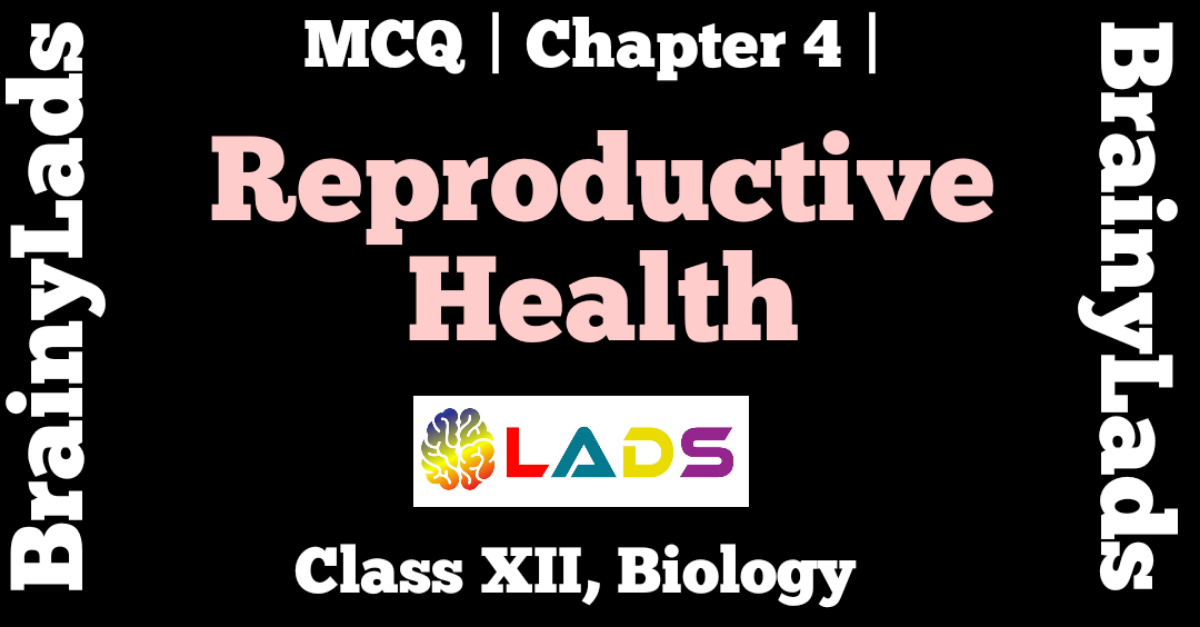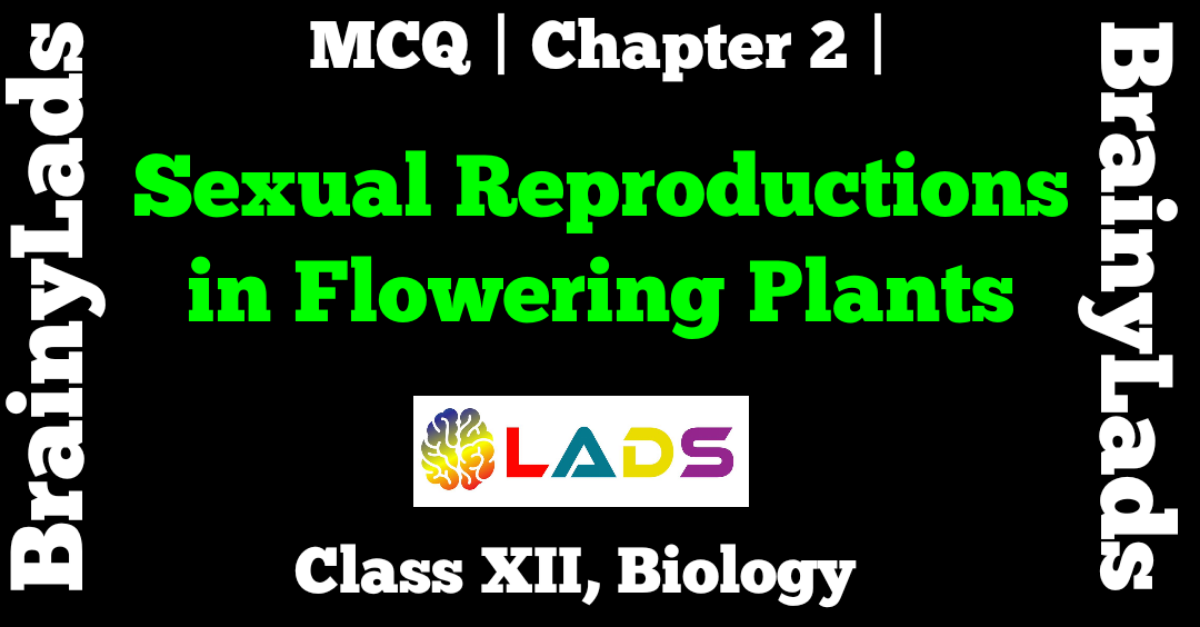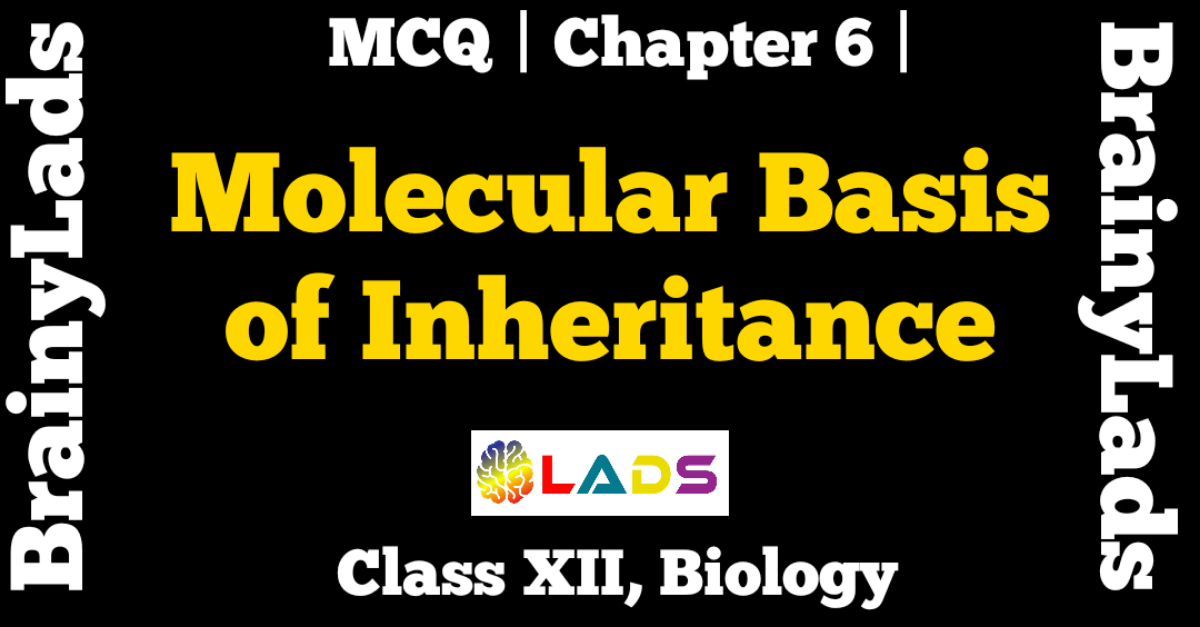MCQ Of Principles of Inheritance and Variation | Chapter 5 | Class XII | Bio
MCQ Of Principles of Inheritance and Variation, Chapter 5, Class 12, Biology
Question 1: Genetics is the branch of biology which deals with
- Variation
- Inheritance
- Both A and B
- Study of characters
Answer : C (Both A and B)
Question 2: The tendency of offspring to resemble their parents is called
- Variation
- Heredity
- Inheritance
- Resemblance
Answer : B (Heredity)
Question 3: Who is called the father of genetics?
- Hugo de Vries
- Morgan
- Mendel
- Darwin
Answer : C (Mendel)
Question 4: Mendel’s experimental material was
- Pisum sativum
- Lathyrus odoratus
- Oryza sativa
- Mirabilis jalapa
Answer : A (Pisum sativum)
Question 5: How many type of gametes can be produced by a diploid organism that is heterozygous for 3 loci ?
- 6
- 4
- 8
- 3
Answer : C (8)
Question 6: During Mendel’s investigation, it was first time that …A… and …B… were applied in biology. Here A and B refers to
- A-statistical analysis; B-mathematical logic
- A-statistical analysis; B-physical logic
- A-statistical analysis; B-chemistry logic
- A-statistical analysis; B-simple logic
Answer : A (A-statistical analysis; B-mathematical logic )
Question 7: How many pairs of true breeding varieties were selected by Mendel for his experiment on pea plant?
- 12
- 14
- 13
- 15
Answer : B (14)
Question 8: Which type of pollination method was adopted by Mendel in his experiment?
- Artificial
- Cross – pollination
- Natural
- Both A and B
Answer : D (Both A and B)
Question 9: F1 – progeny of a cross between pure tall and dwarf plant is always
- Tall
- Short
- Intermediate
- None of these
Answer : A (Tall)
Question 10: How did Mendel obtained recessive character in F2-generation?
- By self-pollinating F1
- By self-pollinating F2
- By cross-pollinating F1
- By cross-pollinating F2
Answer : A (By self-pollinating F1)
Question 11: Both phenotypic and genotypic ratio are same in F2 generation in
- Co – dominance
- Incomplete dominance
- Out – cross
- More than one option is correct
Answer : D (More than one option is correct)
You may also read MCQ of Reproduction in Organisms, MCQ of Sexual Reproduction in Flowering Plants, MCQ of Human Reproduction, MCQ of Reproductive Health, MCQ of Molecular Basis of Inheritance for better understanding of the chapters.
Question 12: Theoretically in incomplete dominance one allele functions as normal, while another allele may function as
- Normal allele
- Non – functional allele
- Normal but less efficient allele
- All of the above
Answer : D (All of the above)
Question 13: Mendel did not propose the theory of
- Dominance
- Incomplete dominance
- Segregation
- Independent assortment
Answer : B (Incomplete dominance)
Question 14: In a red and white flowered cross of mirabilis jalapa F2 generation has red, pink and white flowered plants in the ratio of
- 2 : 1 : 1
- 1 : 1 : 2
- 1 : 2 : 1
- 1 : 0 : 1
Answer : A (2 : 1 : 1)
Question 15: Which mendelian idea is depicted by a cross in which the F1 generation resembles both the parents ?
- Incomplete dominance
- Law of dominance
- Inheritance of one gene
- Codominance
Answer : D (Codominance)
Question 16: The character that is expressed in the F1 – generation is called the
- Recessive character
- Dominant character
- Codominant character
- None of these
Answer : B (Dominant character)
Question 17: If the genotype of an individual consists of only one type of genes at same locus. It is called
- Homozygous
- Heterozygous
- Monoallelic
- Uniallelic
Answer : A (Homozygous)
Question 18: The types of gametes produced by a heterozygous allelic pair are
- 1
- 2
- 3
- Many
Answer : B (2)
Question 19: A cross in which parents differ in a single pair of contrasting character is called
- Monohybrid cross
- Dihybrid cross
- Trihybrid cross
- Tetrahybrid cross
Answer : A (Monohybrid cross)
Question 20: The genotypic ratio of a monohybrid cross in F2 – generation is
- 3 : 1
- 1 : 2 : 1
- 2 : 1 : 1
- 9 : 3 : 3 : 1
Answer : B (1 : 2 : 1)
Question 21: Choose the incorrect pair amongst the following characters Mendel choose for his experiments.
- Pod shape – Elongated/constricted
- Seed colour – Yellow/green
- Seed shape – Round/wrinkled
- Flower position – Axial/terminal
Answer : A (Pod shape – Elongated/constricted )
Question 22: Graphical representation to calculate the probability of all possible genotype of an offspring in genetic cross is called
- Bunett square
- Punnet square
- Morgan square
- Mendel square
Answer : B (Punnet square)
Question 23: Mendel self-pollinated the F2-plant and found that …A… plants continued to generate dwarf plant in …B… and …C… generations. He concluded that the genotype of the dwarfs is …D…
Choose the correct option for A, B, C and D.
- A – dwarf, B – F3, C – F4, D – homozygous
- A – dwarf, B – F3, C – F4, D – heterogygous
- A – tall, B – F5, C – F6, D – homozygous
- A – tall, B – F5, C – F6, D – heterozygous
Answer : A (A – dwarf, B – F3, C – F4, D – homozygous )
Question 24: Test cross is
- Recessive F1 – plant crosses with dominant F2-plant
- Recessive F2 – plant crosses with dominant
- F3 – plant
- Dominant F1 – plant crosses with recessive parent plants
- Dominant F2 – plant crosses with heterozygous parent plants
Answer : D (Dominant F1 – plant crosses with recessive parent plants )
Question 25: The allele which expresses itself in both homozygous and heterozygous condition is called
- Dominant allele
- Recessive allele
- Incomplete dominant allele
- Split allele
Answer : A (Dominant allele)
Question 26: Mendel’s principle of segregation means that the germ cells always receive
- One pair to alleles
- One quarter of the genes
- Either one allele of father or one allele of mother
- Any pair of alleles
Answer : C (Either one allele of father or one allele of mother)
Question 27: Law based on fact that the characters don’t show any blending and both the characters are recovered as such in F2 – generation although one character was absent in F1 – progeny, is
- Law of purity of gametes
- Law of independent assortment
- Law of incomplete dominance
- Law of dominance
Answer : A (Law of purity of gametes)
Question 28: The ABO blood group are controlled by
- I – gene
- c – gene
- B – gene
- n – gene
Answer : A (I – gene)
Question 29: When there are more than two allele controlling the same character. These are called
- Many alleles
- Polyalleles
- Multiple alleles
- All of these
Answer : C (Multiple alleles)
Question 30: Mother = A blood group
Father = AB blood group
The child will not have
- A blood group
- O blood group
- B blood group
- AB blood group
Answer : B (O blood group)
Question 31: Starch synthesis gene in pea plant in heterogygous condition produces starch grain of intermediate size this shows
- Complete dominance
- Incomplete dominance
- Codominance
- None of these
Answer : B (Incomplete dominance)
Question 32: The types of gametes formed by the genotype RrYy are
- RY, Ry, rY, ry
- RY, Ry, ry, ry
- Ry, Ry, Yy, ry
- Rr, RR, Yy, YY
Answer : A (RY, Ry, rY, ry)
Question 33: Which process was used to study the independent assortment ?
- Monohybrid cross
- Dihybrid cross
- Trihybrid cross
- Tetrahybrid cross
Answer : B (Dihybrid cross)
Question 34: Ratio observed in dihybrid cross (phenotypically)
- 3 : 1
- 1 : 2 : 1
- 9 : 7
- 9 : 3 : 3 : 1
Answer : D (9 : 3 : 3 : 1)
Question 35: Multiple alleles control the character of
- Only skin colour
- Only blood group
- Blood groups and skin colour
- Sickle cell
Answer : B (Only blood group)
Question 36: Who proposed the chromosomal theory of inheritance ?
- Sutton and Mendel
- Boveri and Morgan
- Morgan and Mendel
- Sutton and Boveri
Answer : D (Sutton and Boveri )
Question 37: Morgan worked with any fruit fly named as
- Drosophila melanogaster
- Magnifiera Indica
- Mirabilis jalapa
- Drosophila Indica
Answer : A (Drosophila melanogaster)
Question 38: Linked gene is related to …A… And an linked gene is related to …B…
Choose correct option for A and B
- A – linkage; B – crossing over
- A – crossing over; B – linkage
- A – crossing over; B – recombination
- A – recombination; B – crossing gene
Answer : A (A – linkage; B – crossing over)
Question 39: How many linkage groups are present in human male ?
- 24
- 23
- 46
- 22
Answer : A (24)
Question 40: In which state crossing over takes place ?
- Leptotene
- Cytokinesis
- Pachytene
- Diakinesis
Answer : C (Pachytene)
Question 41: Linkage reduce the frequency of
- Hybrids
- All parental types
- Homozygous recessive parents
- Heterozygous recessive parents
Answer : A (Hybrids)
Question 42: Experimental evidences of chromosomal theory of inheritance was given by
- HT Morgan
- TH Morgan
- Hugo de Vries
- De Vries
Answer : B (TH Morgan)
Question 43: Linkage groups are always present on the
- Homologous chromosomes
- Analogous chromosomes
- Sex chromosomes
- Heterologous chromosomes
Answer : A (Homologous chromosomes)
Question 44: Which of the following statement is not true of two genes that show 50% recombination frequency ?
- The genes may be on different chromosomes
- The genes are tightly linked
- The genes show independent assortment
- If the genes are present on the same chromosome, they undergo more than one crossovers in every meiosis
Answer : B (The genes are tightly linked)
Question 45: Choose the incorrect pair with respect to sex determination in different organisms.
- Grasshopper = XO type
- Birds = ZZ – ZW type
- Drosophila = XX – XO type
- Human = XX – XY type
Answer : C (Drosophila = XX – XO type)
Question 46: Sickle – cell anemia is classical example of
- Frame shift mutation
- Point mutation
- Both A and B
- None of the above
Answer : B (Point mutation)
Question 47: A normal-visioned man whose father was colour blind, marries a woman whose father was also colour blind, They have their first child as a daughter. What are the chances that this child would be colour blind?
- 100%
- 0%
- 25%
- 50%
Answer : B (0%)
Question 48: Which of the following most appropriately describes haemophilia?
- X-linked recessive gene disorder
- Chromosomal disorder
- Dominant gene disorder
- Recessive gene disorder
Answer: A (X-linked recessive gene disorder)
Question 49: Substitution of valine at 6th position of beta globin chain of haemoglobin results in individuals suffering from
- Haemophilia
- Phenylketonuria
- Sickle-cell anaemia
- Down’s syndrome
Answer : C (Sickle cell anaemia)
Question 50: In haemophilia, a single protein that is a part of cascade of protein involved in …A… of…B… is affected. Single cut will result in …C… bleeding.
Choose the correct option for A, B and C.
- A – coagulation, B – RBC, C – continuous
- A – coagulation, B – WBC, C – continuous
- A – clotting, B – blood, C – continuous
- A – coagulation, B – blood, C – continuous
Answer : C (A – clotting, B – blood, C – continuous)
Question 51: The enzyme missing in phenylketonuria is
- Phenylalanine hydroxylase
- Phenylalanine reductase
- Phenylalanine oxidase
- Phenylalanine oxidoreductase
Answer : A (Phenylalanine hydroxylase )
Question 52: In sickle – cell anaemia, GAG is replaced by
- GGA
- GUG
- AAG
- GGG
Answer : B (GUG)
Question 53: Phenylalanine does not changed to tyrosine. This condition is seen in
- Sickle-cell anaemia
- Phenylketonuria
- Thalassaemia
- Haemophilia
Answer : B (Phenylketonuria)
Question 54: Choose the incorrect pair.
- Down’s syndrome – Extra copy of chromosome no. 21
- Turner’s syndrome – Loss of an X – chromosome in females
- Polyploidy – Seen in plants
- None of the above
Answer : D (None of the above)
Question 55: In phenylketonuria, the phenylalanine gets converted to
- Acetic acid
- Phenyl acetic acid
- Phenyl pyruvic acid
- Pyruvic acid
Answer : C (Phenyl pyruvic acid)
Question 56: Klinefelter’s syndrome results from
- XX egg and Y from sperm
- XX egg and XY sperm
- X egg and YY sperm
- XY egg and X sperm
Answer : A (XX egg and Y from sperm)
Question 57: Phenylketonuria disease is
- Autosomal dominant
- Autosomal recessive
- Sex-linked recessive
- Sex-linked dominant
Answer : B (Autosomal recessive )
Question 58: Pick out the correct statements.
I. Haemophilia is a sex-linked recessive disease.
II. Down’s syndrome is due to aneuploidy.
III. Phenylketonuria is an autosomal recessive gene disorder.
IV. Sickle-cell anaemia is an X-linked recessive disorder.
- II and IV
- I, II and III
- I, III and IV
- I and IV
Answer : B (I, II and III)
Question 59: Which of the following are Mendelian disorder?
- Thalassemia
- Cystic fibrosis
- Phenylketonuria
- All of these
Answer : D (All of these)
Question 60: In a dihybrid cross, if you get 9:3:3:1 ratio it denotes that
- The alleles of two genes are interacting with each other
- It is a multigenic inheritance
- It is a case of multiple allelism
- The alleles of two genes are segregating independently
Answer : D (The alleles of two genes are segregating independently)
Question 61: Which of the following will not result in variation among siblings ?
- Independent assortment of genes
- Crossing over
- Linkage
- Mutation
Answer : C (Linkage)
Question 62: Which of the following is not a dominant trait ?
I Colour blindness
II Rh factor
III Albinism
IV Haemophilia
- I , III , IV
- I , II , III , IV
- II , III , IV
- I , II , III
Answer : A ( I , III , IV)
Question 63: Polyploidy wheat does not normally show and increase in
- Size
- Vigour
- Resistance to disease
- Length of life cycle
Answer : D (Length of life cycle)
Question 64: Distance between the genes and percentage of recombination shows
- A direct relationship
- An inverse relationship
- A parallel relationship
- No relationship
Answer : A (A direct relationship)
Question 65: ZZ / ZW type of sex determination is seen in
- Platypus
- Snails
- Cockroach
- Peacock
Answer : D (Peacock)
Question 66: If a genetic disease is transferred from a phenotypically normal but carrier female to only some of the male progeny, the disease is
- Autosomal dominant
- Autosomal recessive
- Sex – linked dominant
- Sex – linked recessive
Answer : D (Sex – linked recessive)
Do share the post if you liked it. For more updates, keep logging on BrainyLads



Great